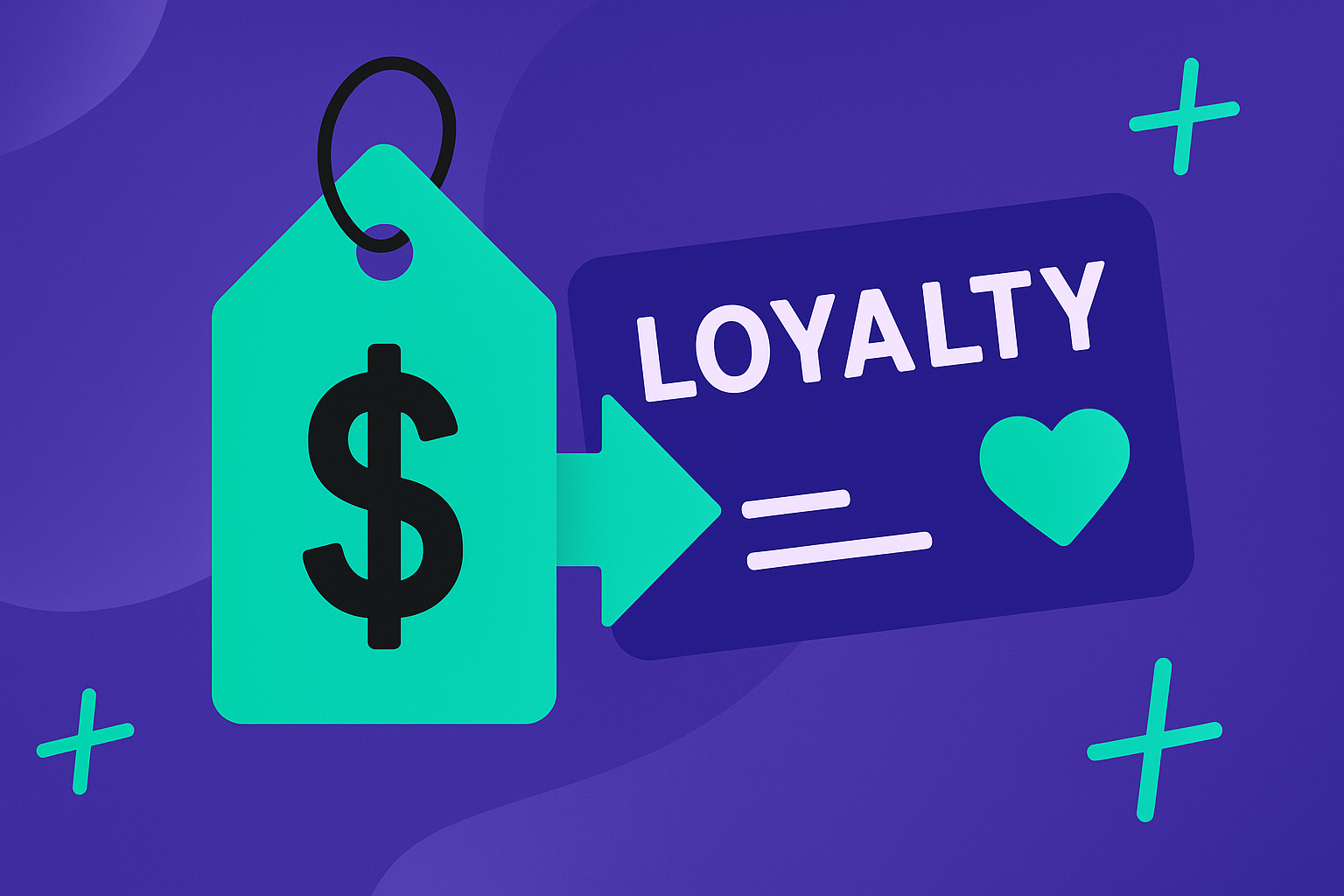Sometimes your customers may not always love what they ordered, and that’s natural! The clothes may not fit, the decor piece isn’t what they were really looking for, they accidentally purchased the wrong item, and so on. There are many reasons why someone would need to return items to the retailer who sold them. That’s why having a return policy can help online retailers earn more sales and inspire customer loyalty. Your customers will feel safer ordering items from your store knowing they can return them if they don’t quite work out. Unfortunately, what some view as good customer service, others see as an opportunity for fraud and abuse.
Return fraud is the practice of returning items that don’t qualify for a refund. According to a study performed by the National Retail Federation, about 6% of returns are fraudulent. While this seems like a small fraction, these costs from these return scams add up to $25.4 billion, costing some bigger companies millions.
Fraud is illegal, and retail fraud is no different. It is a form of theft, which could harm your business profits. Return fraud takes many forms, with a sliding level of intent from being an honest mistake to outright criminal activity. Eliminating return abuse is challenging, but there are steps you can take to minimize your losses without alienating honest customers. First, let’s look at the different forms of retail return fraud.
What is Return Fraud?
Return fraud comes in many forms. It could involve more obvious criminal activity, like stealing merchant terminals, but could also involve more subtlety, like when someone buys an item for an occasion, and then returns it shortly afterward. No matter the perceived severity of the return scam, the result is the same- lost revenue for your business.
One of the best ways to combat return fraud happening to your business is being aware. Now don’t get any ideas here! This information is meant to help you keep a keen eye out for those trying to steal from your business so you can prevent it or stop it in its tracks. By knowing the various methods of return fraud, you can make sure to catch it and save on your return costs. Here is what you can watch out for:
Return Fraud Wardrobing
Also referred to as renting, return fraud wardrobing is when a person buys an item, wears it, then returns it for a refund. Some return policies allow for returning used items if a customer isn’t happy with it, and in those cases, a return would not be considered wardrobing. However, if a person buys a shirt, for example, with the intent to wear it once or twice and then return it, they are committing the fraudulent act of wardrobing.
Receipt Fraud
This is among the more technologically advanced forms of return fraud. It involves creating or sourcing a fake receipt and then using it for a refund on an item that wasn’t actually purchased.
Receipt Switching
More common in brick and mortar shops than eCommerce, receipt switching involves purchasing an item to get a receipt. The person then comes back to the store, selects a similar item from the shelf, and uses that unpurchased item, along with the receipt, to get a refund. They have now gotten their initial item for free.
Receipt Shopping
This is similar to receipt switching but without the initial purchase. Instead, the person finds or steals a legitimate receipt, then uses it as a shopping list to pick out items in the store. Using the unpurchased items and the stolen or found receipt, they con the store by requesting a refund of all the items.

Merchandise Swap
To perform this type of fraud, a person buys a new version of an item they already have in their possession. The person then packs the old item in the new packaging before returning it while keeping the new item. In some instances, like this case of return fraud at Amazon, online shoppers will go the extra mile to file a fraudulent return and send back a box with dirt or no actual items in it. This happens to companies that offer refunds before actually receiving the returned item.
Price Switching
Price switching is when a person swaps out a price tag on an item with that of a higher-priced item. The wrongly-tagged, cheaper item is then returned for the price of the more expensive item.
Returning Stolen Items
Retailers who accept returns without the original receipt are vulnerable to return fraud acts that involve shoplifting. First, the person steals the item from the shop. The theft then returns to the store with the stolen item to return it for a refund without needing a receipt.
Item Types in Return Fraud: Expensive, Counterfeit, Broken swaps
eCommerce companies of all sorts are vulnerable to return fraud, with 7.5% of all online returns estimated to be fraudulent. You may experience it in many of the above forms. When it comes to what items the culprits are using for their return fraud acts, there are three main types. The bulk of fraudulent activity involves expensive items, but some will also include counterfeit products or replacing the original item with a broken product when returning it. When sending a broken item, the culprit gets to keep the newer, better edition of something they may have already owned but wanted to upgrade.
How to Recognize Return Fraud
There are several ways to recognize fraudulent activity. On a system-wide level, you can look for trends in your purchase and shipping data. If you notice a pattern of returns made shortly after the item was purchased, it could be an indicator of fraud. Another red flag is if the return is shipped from a different location than where the original delivery was sent. At the very least, these incidents should raise questions of why the return is coming from a different location than the delivery address. You’ll also want to look at what, exactly, it is that the person is returning. If it’s one of the common items that are used in fraudulent returns, you may want to approach this situation with caution.
Let’s pause a moment and take this opportunity to highlight why outsourcing could be what you need for recognizing and preventing fraud! If you were to outsource your return processes to a company that knows how to overcome return fraud, you won’t need to sweat any of the small stuff. At Return Bear, our store associates will check the returned items for our partners before disbursing refunds. This protects our clients from receiving return boxes with swapped merchandise or merchandise in conditions that fall outside the return policy guidelines.
Now, note that there are still more strategies to learn to help you overcome the issues of return fraud for your business:
The Value of Receipts
Receipts can be a helpful tool for combating fraud. Insisting on a receipt upon refund request will eliminate some of the complications or questions surrounding returns since you’ll have proof that the product was actually purchased at your shop.

Methods to Prevent Retail Fraud
Free return shipping is seen by customers as an incentive to buy, as it offers security for online shoppers. But that incentive opens the door to possible fraudulent activity. To solve this problem, retailers need to revisit their return policy and look for improvements. Some ways to reduce instances of fraud include:
1. Charging a restocking fee for big-ticket items
2. Offering store credit instead of cash on returns
3. Issuing refunds to the original card that purchased the item
4. Limiting the time period for returning merchandise
5. Insist on proof of purchase, such as a receipt
Best Practices for Your Return Policy
Having a clear, easy-to-understand return policy is essential to reducing customer dissatisfaction as well as discouraging fraud. This policy should be easy to find and clearly posted where customers will see it. For online businesses, this means placing your return policy on your website with clear links to it from your product and checkout pages.
The policy should state, in plain language, the return period (i.e., 14 days), details about processing time, fees that may apply, as well as any other details you feel your customer needs to know.
A well-structured return policy will allow the flexibility for loyal customers to return things that don’t fit or don’t meet their needs while also including protections (like the need for original tags or packaging.) That way, your company can offer valued consumers the security of being able to return items, while also limiting fraudulent returns.
For apparel retailers, including details on the worn-wear return policy will help separate legitimate returns from fraudulent ones. For instance, a person may buy a pair of shoes then return them because they hurt after a few hours. A different person may buy a pair of shoes for an event, love the shoes, then return them because the event has passed. Depending on your company’s return policy, these could be either fraudulent or legitimate returns. The return policy should clearly state how worn-once items will be treated so you can reduce wardrobing fraud.
With clear policies in place and an awareness of the types of common return fraud, you will be able to strike a balance between retail fraud prevention and providing a pleasant customer experience.
Are returns taking up too much time in your eCommerce processes? Concerned about being susceptible to return fraud? At Return Bear, we are your friendly neighbors, here to make your return processes seamless so you can enhance your customer experience while protecting your profits. Outsource your product return systems so your loyal and honest consumers can enjoy easy, accessible product returns with your business. Learn more about how our logistical expertise is the key to unlocking a no-regret eCommerce economy. Contact us for more information.













.jpg)






%20(1).jpg)







































